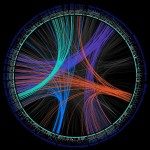Link to Pubmed [PMID] – 21219179
Annu. Rev. Immunol. 2011;29:447-91
Toll-like receptors (TLRs) and interleukin-1 receptors (IL-1Rs) have TIR intracellular domains that engage two main signaling pathways, via the TIR-containing adaptors MyD88 (which is not used by TLR3) and TRIF (which is used only by TLR3 and TLR4). Extensive studies in inbred mice in various experimental settings have attributed key roles in immunity to TLR- and IL-1R-mediated responses, but what contribution do human TLRs and IL-1Rs actually make to host defense in the natural setting? Evolutionary genetic studies have shown that human intracellular TLRs have evolved under stronger purifying selection than surface-expressed TLRs, for which the frequency of missense and nonsense alleles is high in the general population. Epidemiological genetic studies have yet to provide convincing evidence of a major contribution of common variants of human TLRs, IL-1Rs, or their adaptors to host defense. Clinical genetic studies have revealed that rare mutations affecting the TLR3-TRIF pathway underlie herpes simplex virus encephalitis, whereas mutations in the TIR-MyD88 pathway underlie pyogenic bacterial diseases in childhood. A careful reconsideration of the contributions of TLRs and IL-1Rs to host defense in natura is required.

